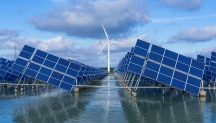

How Solar Power Improves Coffee Farming in Southern Philippines
Newsletter
Throughout his five decades of farming and producing coffee in Kalamansig, Sultan Kudarat – a province in the island of Mindanao, the Philippines – Mariano Billedo has never experienced such ease and efficiency when doing his job. As President of Limulan Coffee Farmers Association, the 74 year old shared his colleagues’ struggles in selling unprocessed coffee beans at a low price.
“Coffee farming is a delicate and time-consuming process that involves several steps. After three to four years of growth cycle, the cherries are ready to be harvested and selected. In the absence of processing equipment, the beans are manually processed to remove the outer layer and pulp, followed by manual drying, sorting, roasting and packaging. But after the laborious process, we can only sell them at a low price as raw beans,” explained Mariano.
Since July this year, however, the situation has improved for Mariano and his fellow coffee farmers in the Association. Thanks to a project implemented by the Mindanao Development Authority in co-operation with the National Electrification Administration, and with funding from the European Union, the farmers can use a post-harvest processing facility powered by solar energy.

The facility is built within the framework of the I-PURE Kalamansig Sustainable Coffee Production Project, which is part of the broader “Integration of Productive Uses of Renewable Energy for Sustainable and Inclusive Energisation in Mindanao (l-PURE Mindanao)” project. A key component of I-PURE Mindanao is to support a portfolio of renewable energy investments to foster development in rural areas, particularly in agriculture.
With their updated Nationally Determined Contribution, the Philippines’ government commits to a projected 75% reduction and avoidance of greenhouse gas emissions in the sectors of agriculture, waste, industry, transport and energy from 2020 to 2030. The I-PURE Kalamansig Sustainable Coffee Production project seeks to promote the adoption of renewable energy solutions in the agricultural sector and inspire other agricultural communities to exercise sustainable practices.
Aimed at improving the communities’ livelihoods by facilitating access to sustainable energy, the project empowers local coffee farmers and enhances post-harvest processing capabilities using renewables solutions. With the new solar-powered facility which supplies sustainable electricity and lowers greenhouse gas emissions as well as operating costs, the farmers can now turn the raw coffee beans into finished products in the form of coffee powders, increasing their selling price in the market.
The farmers also received training on the installation of the new system. The Association collaborated with the contractor and the Mindanao Development Authority to teach farmers how to operate the solar-powered machinery, ensure its maintenance and troubleshoot common issues.
“It was a valuable experience as it provided us with new skills and knowledge,” said Mariano gratefully. “Apart from technical skills, we also received knowledge to improve our business operation such as entrepreneurial knowledge, operations management, quality control and assurance, market expansion, accounting and financial management,” he added.

The Philippines is one of the solar hotspots in Southeast Asia. By 2022, however, the country’s installed solar photovoltaic (PV) capacity still only reached 1 625 megawatts, a mere 1.3% of its total potential for power generation (122.5 gigawatt). Powered by an on-grid solar PV system with a peak capacity of 16.38 kilowatts, the facility is equipped with all-weather coffee dryers and post-harvest coffee equipment.
“The first time I saw the solar-powered coffee processing facility, I was amazed by the innovation. It was a significant departure from the traditional processing methods we had been using for years. The facility harnesses the sun's energy to power various stages of coffee processing. I was thrilled because it does not only make our work more efficient but also more sustainable,” said Mariano.
Mariano and his colleagues immediately felt the significant improvement brought about by the solar-powered equipment, notably in the drying process. In the past, they had to dry the beans in open spaces, which often led to contamination by dust and other impurities. With the new facility, the beans are dried in a controlled environment, protecting them from external pollutants. This has resulted in higher quality coffee and a reduction in product loss due to contamination.
Although the facility has only been operational for a couple of months, the farmers have already benefited from the low electricity costs which have been their biggest burden. For his community, he wished, “I dream of more farmers adopting renewable energy solutions and of a more prosperous future for all. Our coffee is a source of pride for our community, and I believe that by embracing sustainability, we can leave a positive legacy for generations to come.”
Photo Credit: Raymond Peter Esperat
Renewable energy solutions and integrated food-energy systems can directly advance energy and food security, while also contributing to job creation, gender equality and climate resilience and adaptation. Read more from Renewable Energy for Agri-food Systems.




